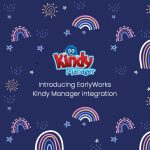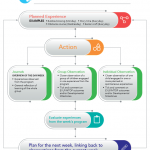Hearing children’s voices and acknowledging children’s rights in the documentation process
The latest ACECQA Newsletter (2019 Issue 10) highlights the importance of the rights of the child in the documentation process. This is something we feel very strongly about at EarlyWorks. As developers of a comprehensive online documentation tool, we feel a real sense of responsibility for keeping the rights of the child front and centre in both the development and training process.
This passion for the rights of the child, is evident in many of EarlyWorks’ functions:
- The ability to include the child’s voice in observations and journals.
- The way the child’s voice is so visually prominent in the presentation of Observations and Journal entries (particularly the multimedia view where the child’s voice scrolls down the screen!).
- The ability to record a ‘Quick Observation’ where educators can quickly jot down the narrative, and then save the Observation to a Program and come back to it later on. This allows the educator to keep doing the most important work of all; to be present for the children in their care, rather than being bogged down with documenting.
- The ability to acknowledge children’s spontaneously initiated experiences and record them as experiences on the program (when documenting these experiences, under the ‘preceding observations’ tab, click on ‘Non program related’ and select ‘spontaneous – child initiated’).
This passion for the rights of the child is also evident in our suggestions as to how to make the most of EarlyWorks’ functions to hear the voice of the child:
- When adding captions for photos, ask the children to describe what is happening, or explain why that photo is important to them.
- Let the children choose which photos are used in Observations and Journals, or Comments, and then explain their choice in the caption.
- Ask children to choose what pieces of artwork are shared in EarlyWorks (as part of Observations and Journals, or added to comments, or added as an individual image via the room). Again, include the children’s thoughts in the caption. For example, “I wanted to share this picture because… I like the colours I used”).
In OSHC services, Educators can be particularly creative in the way children’s voices are heard:
- Hand EarlyWorks over to the children, getting the children to record the Narrative for Daily or Weekly Journals (e.g. “This week’s Journal is brought to you by Brianna and Jake”) This is also a brilliant way of encouraging families to read the Journal Entries😊.
- Ask for children’s ideas when planning. The children could be given big sheets of paper to record their ideas, and then take photos of these records. These photos of their ideas could then be added to the Observation you would create of children engaged in the planning process. Then when you add some of the experiences to the program that have evolved from the children’s ideas, the experiences can be linked back to this Observation, as the ‘Preceding Observation’.
Recent Posts







